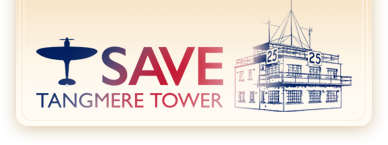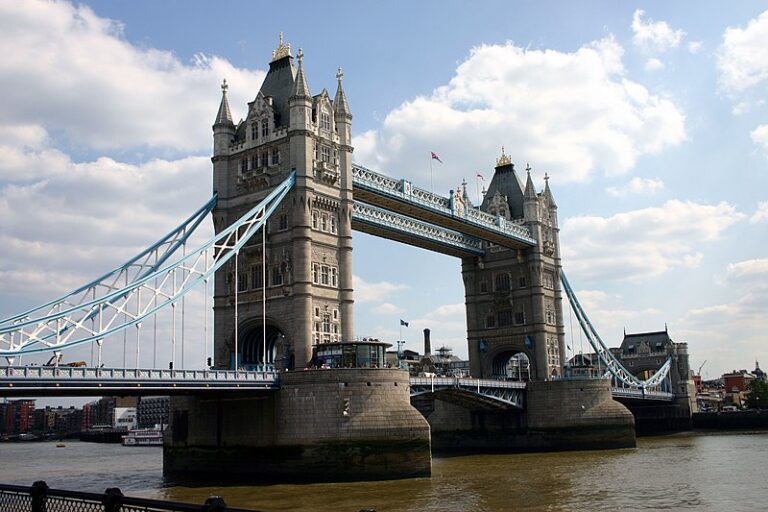On the night of 28 December 1941, a significant mission took off from the runway of RAF Tangmere: Operation Anthropoid.
With America’s entry into World War II after the attack on Pearl Harbour on 7 December 1941, Prime Minister Winston Churchill gained a crucial ally in the fight against the Axis powers. Britain, which had weathered the storm of German aerial assault began to work on leaning back into Europe and taking the fight to the Nazis. As part of this wider strategy, the Special Operations Executive (SOE) intensified efforts to build the foundations of an underground army that would set Occupied Europe ablaze.
This high-stakes Operation Anthropoid was conceived in October 1941, as the programme of terror being inflicted on Czechoslovakia intensified after the appointment of a new Reichsprotector of Bohemia and Moravia (Hitler having found his predecessor insufficiently brutal). On 28 December 1941, Jan Kubiš and Jozef Gabčík were dropped into Czechoslovakia for Operation Anthropoid. The target was Reinhard Heydrich. Heydrich was a high-ranking Nazi official instrumental in the Holocaust. Known as Hitler’s “man with the iron heart,” Heydrich led the Gestapo, Sicherheitsdienst (SD), and Einsatzgruppen death squads, overseeing mass executions and deportations. As chair of the Wannsee Conference, Heydrich coordinated the “Final Solution.” The mission for these paratroopers was clear: Hyedrich was to be killed.
Preparing for ANTHROPOID
František Moravec, the head of Czechoslovak intelligence for the government in exile headed the response to this brutality – a gamble that cutting off the head of the snake might weaken the Nazi grip on Czechoslovakia. Recognizing the importance of this operation shortly after Reinhard Heydrich’s appointment as Reichsprotector, Moravec worked closely with Brigadier Colin Gubbins, responsible for Czech and Polish sections within the SOE, who quickly agreed to support.
From the exiled Czech soldiers in Britain, Moravec handpicked candidates for intensive training at one of the SOE’s Special Training Schools (STS 21) in Arisaig, Lochaber, just south of Skye in Scotland (STS 25 was nearby a mile or so further north, distributed across Garramor house, Camusdarrach house, and Traigh house, the so called Group A schools). Each training course lasted four weeks and was conducted for groups of around 20 men. Participants were trained in physical fitness, marksmanship, map-reading, hand-to-hand combat, explosives, radio equipment, and intelligence gathering. After this assault course, there was a two-week training course in parachuting, which took place at STS 51 Ringway near Manchester.
In his memoirs, Ernest Van Maurik, one of the trainers in the North of Scotland, described the brief from his Commanding Officer when he arrived at Arisaig:
“This is Arisaig House and we’re the headquarters and administrative centre of four or five small training schools situated between here and the end of the road at Mallaig. […] So, what do we teach and who are our students? […] Fieldcraft, demolitions, sabotage and particular emphasis on toughening up and testing out students, some of whom will have come practically straight from civilian life. To understand the why and wherefore, all you need know is that with most Europe under Hitler’s heel, Churchill has decreed that measures must be taken to stir up and support resistance to the Germans in occupied countries; for example, to sabotage factories forced to work on behalf of the German economy and to tie down troops which might otherwise be used offensively against us.
This is, of course, easier said than done but in order to put the Old Man’s directive into effect, a special inter-services organisation has been set up with HQ in London and we here are part of its training arm. Our job is to train prospective agents who speak the lingo and who will eventually be despatched into Occupied Europe. These chaps – they’ve so far all been men – are first sent to a preliminary school in the south where they get tested for suitability and those who pass muster come up to us for more serious training. We act as a second filter, so it’s important for us to give an unbiased opinion on them. From here they go down to RAF Ringway near Manchester, where they learn to parachute and then go on to finishing schools, where they’re given specialist instruction for their coming missions in occupied territory.”
Initially, Warrant Officer Jozef Gabčík (Slovak) and Staff Sergeant Karel Svoboda (Czech) were selected to carry out Operation Anthropoid. They had been amongst the first Czechoslovaks to undertake the assault course at STS 25 in the summer of 1941. However, after Svoboda suffered a head injury during jump training at STS 51, Jan Kubiš (Czech) was chosen to replace him. Kubiš was part of the second group of trainees at STS 25, from 16 August to 12 September. Weeks of preparation were required to bring his replacement up to speed and secure the correct documents for clandestine work, setting back the clock on the operation. Between 14-18 October, Gabčík and Kubiš underwent SOE training in Scotland, concentrating on shooting and munitions. Then on 20 October, they transferred to Station XVII in Brickendonbury Manor, near London for further training.
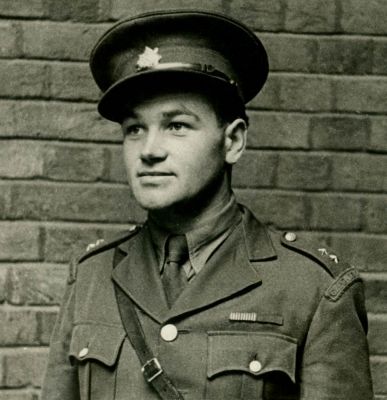
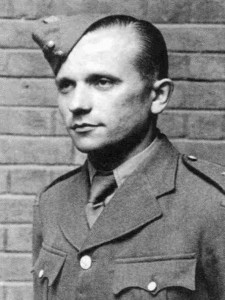
The Czech Defence Ministry quotes Gabčík’s graduation report from STS25 (and this gives a flavour of the ‘unbiased opinion’ of which Van Maurik had been advised):
“A smart and well-disciplined soldier. He has not the brains of some of the others and is slow at acquiring knowledge. He is thoroughly reliable and very keen, and has plenty of common sense… He is a good leader, when sure of his ground, and he obeys orders to the last detail.”
The report for Kubiš read:
“A good reliable soldier, quiet… comes in for a certain amount of good-natured teasing. Classification ‘D’, might work up to ‘B’.”
Van Maurik described the arrival of the Czech soldiers to be trained in the summer of 1941:
“Coping with double the normal number of students did not prove very much more difficult as they were all trained members of the Czech Army in Britain, most of them were senior NCOs and they were under the discipline of a young officer. Many of them had had adventurous journeys reaching Britain. As far as one could tell none of them knew exactly what they were being trained for, nor did any of us, but as far as they were concerned if it led to the opportunity of having a bash at the Germans, so very much the better. They enjoyed getting away from regimental life, they fired at targets as if they really believed they were Germans, they approached demolition training with the greatest gusto and all in all they had a darn good time. Nevertheless, they maintained faultless discipline and never overstepped the mark.”
From 8 November, Gabčík and Kubiš stayed at STS 2 in Villa Bellasis near Dorking as they prepared for the mission on the SOE Graduate course. On 1 December in London, they signed the declaration that committed them to the mission:
“The substance of my mission basically is that I will be sent back to my homeland, with another member of the Czechoslovak Army, in order to commit an act of sabotage or terrorism at a place and in a situation depending on our findings at the given site and under the given circumstances, and I will do so effectively so as to generate the sought-after response not only in the home country but also abroad. I will do it to the extent of my best knowledge and conscience so that I can successfully fulfill this mission for which I have volunteered.”
Sortie from Tangmere
The logistical and operational complexities of getting the paratroopers to Czechoslovakia highlighted the challenges of wartime aviation. Long-range sorties to Eastern Europe were rare, and the mission required the use of a Halifax bomber (an aircraft only recently introduced for use on Special Duties operations). Flight Lieutenant Ron Hockey, piloting a Halifax L9613 (NF-V) of No. 138 Special Duties Squadron, embarked on a treacherous journey to Czechoslovakia. The aircraft, with its crew of eight, along with seven agents and SOE officer Major Sustr, took off from RAF Tangmere on December 28th.
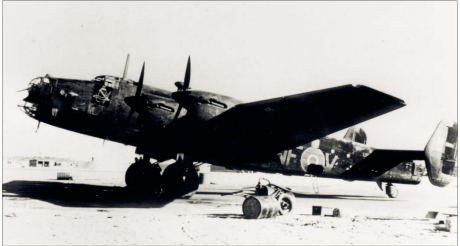
Groups ANTHROPOID, SILVER A and SILVER B, were air-dropped during the night of December 28-29,
1941. Source: Burian et al. Assassination: Operation ANTHROPOID 1941-1942 (Prague, 2002)
The sortie faced challenges as it broke through the boundaries of wartime Europe. Departing at 22:00, the Halifax crossed the French coast near Le Crotoy, reaching Darmstadt by 00:42 hours. Heavy snow obscured key landmarks on the ground and made navigation nearly impossible. Despite clear skies initially, visibility deteriorated over occupied Europe, making it difficult to locate the designated dropping zones (DZs). Mistaking Prague for Pilsen, the Anthropoid team was dropped blind near the village of Nehvizdy at 2:24 a.m., slightly off their intended target. Navigating winter snow and poor visibility, Fl Lt. Hockey relied on his navigator’s calculations due to a low cloud base, and the crew made relatively accurate drops, with none falling more than ten miles off target.
Two other groups of agents, on missions entitled Silver A and Silver B, were then dropped by parachute. These teams were tasked with forming communications links to help supply information about the situation in Czechoslovakia (as well as forming connections for military intelligence).
The return journey to Tangmere for Fl Lt. Hockey was also perilous. The Halifax endured anti-aircraft fire near Darmstadt and was struck by flak, blowing open the cockpit canopy escape hatch. The second pilot, had to hold it in place until they landed safely. Despite these dangers, the aircraft successfully crossed the French coast at 07:20, reached England at 08:07, and landed safely at Tangmere Airport at 08:19, having spent over ten gruelling hours in the air.
Operation Anthropoid
After parachuting into the country, Kubiš and Gabčík took refuge in a local garden shed belonging to Antonín Sedláček, a trusted resistance member. Here, they hid their equipment and sabotage materials, preparing for the crucial days ahead.
The Czech Defence Ministry details the kit with which the ANTHROPOID team were equipped:
“two containers with operating material. The containers included, among other things, two pistols, a 38 COLT – with four full spare magazines and 100 bullets – six armour-piercing bombs filled with plastic explosives (one of which was ready for its target), two magazines of fuses, two model Mills grenades, one Tree Spigot bomb launcher with one bomb, four electric fuses, one STEN Mk.II machine gun with 100 bullets, 32 lbs. of plastic explosives, two yards of fuse rope, four smoke bombs, a reel of steel string and three timing pencils.”
Clearly, this was an operation designed for incisive action.
Their first night was spent in the relative safety of Sedláček’s shed, and the next day the two men pressed on, following their original mission instructions toward Pilsen. Their objective was to connect with local resistance networks, whose members were instrumental in providing shelter, information, and vital resources. From Pilsen, they moved on to Prague, where in the months to come they began working on plans for the assassination.
Despite some reservations from Czechoslovak resistors, the government in exile pushed for the assassination to go ahead. Different schemes were considered, including derailing trains, though eventually the paratroopers decided to target Heydrich on his daily commute. On 27 May 1942, Kubiš and Gabčík ambushed Reinhard Heydrich in Prague, gravely wounding him with a grenade. Waiting at a tramstop, where the car was forced to slow for a curve, the paratroopers tried to open fire on the car, tossing a modified anti-tank grenade at the vehicle. Despite jammed guns and an off-target throw, the explosion gravely injured Heydrich, who died from his wounds on 4 June. In the aftermath of the attack, authorities conducted raids and arrests, looking for leads on the perpetrators.
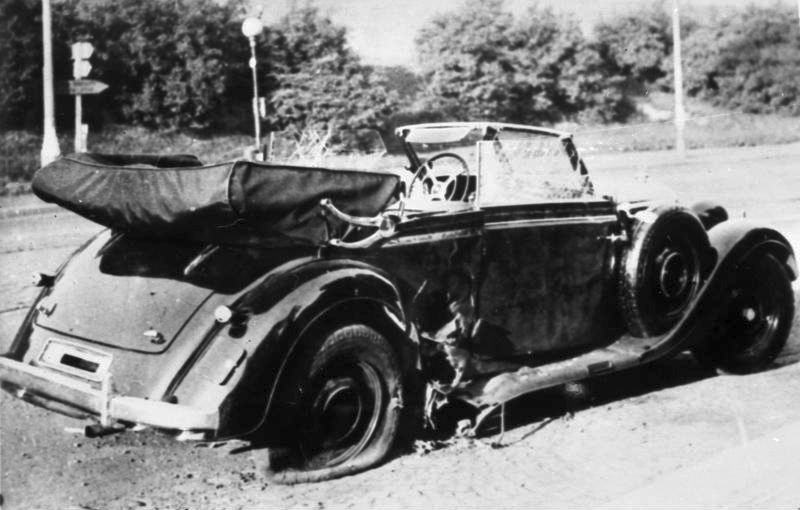
Van Maurik spoke about his own surprise at finding out later about the men he had trained:
“It was under a year later that I read on the front pages of the newspapers of the assassination of Heydrich and was let into the secret that it was two of the men I had helped to train who had done the deed. SS-Obergruppenführer Reinhard Heydrich, who was No.2 to Himmler in the SS, had become Reichs Protector of Bohemia and Moravia based in Prague, and far from ‘protecting’ the population he had set himself the task of ‘germanisation’ of Czechoslovakia and was engaged in mass arrests and executions.
The Czech government-in-exile under the leadership of Eduard Beneš decided that he should be eliminated and SOE, as I had now discovered our organisation was called, was prepared to provide the means – training, equipment and air transport – to make it possible. The operation was planned by the Czech Intelligence chief in London, Moravec, and the young Czech officer I had shared my quarters with in Camusdarroch had been one of his assistants. Jozef Gabčík and Jan Kubiš had carried out the attack on Heydrich’s car and several other of my ex-students had acted as back-up.
The German reaction was predictable. Himmler and several hundred Gestapo men descended on Prague but the terror and indiscriminate shooting of innocents they unleashed did nothing to reveal the whereabouts of the parachutists until one man claimed the reward and gave away their hiding place in the crypt of the Orthodox Cathedral of St. Cyril and St. Methodius. The men held out against an overwhelming force of Gestapo and SS, an attempt by the fire brigade to flood them out failed but eventually the survivors used their remaining ammunition on themselves rather than being taken alive.”
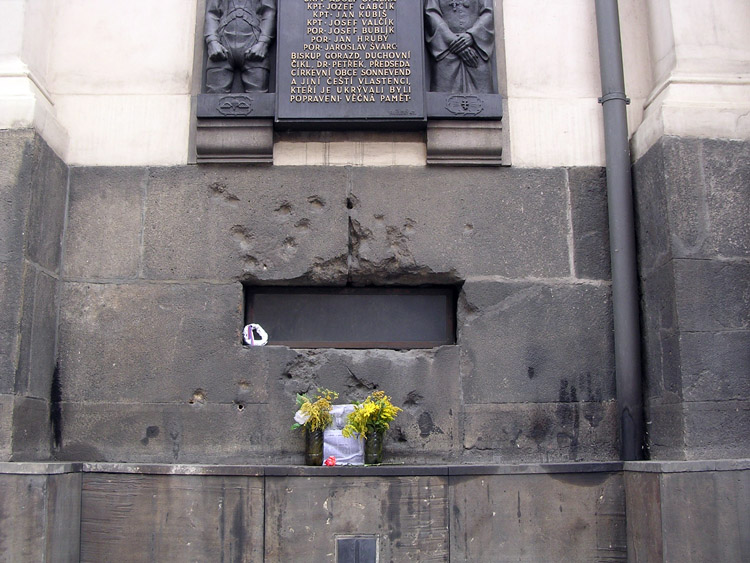
In retaliation, the Nazis unleashed brutal reprisals, razing the villages of Lidice and Ležáky, executing nearly 200 men, deporting women and children, and devastating Czechoslovak resistance. In the months that followed many more would be executed for resisting Nazi brutality. This act of defiance remains a powerful symbol of resistance against tyranny.
Van Maurik quoted MRD Foot’s assessment of the operation:
“the German over-reaction was a propaganda gift to the Allies and that the loss of Himmler’s most able deputy was a set-back for the German security services. That this was achieved with considerable loss of life cannot be denied, but there is, of course, no telling how many lives Heydrich would have continued to exact had he been allowed to survive.”
Politically, the assassination had an impact at the top level. In August 1942, British Foreign Secretary Anthony Eden notified Czechoslovak Foreign Minister Jan Masaryk that the government would revoke the Munich Agreement, and later, in September, General Charles de Gaulle signed the proclamation of the French National Assembly, similarly revoking the Munich Agreement.
The clandestine action of the paratroopers had helped move the Allies towards recognising Czechoslovakia’s independence from the Nazi Reich. Operation Anthropoid not only marked a key moment in resistance efforts but also highlighted RAF Tangmere’s vital role in Special Operations Executive (SOE) activities.
Sources:
Nicolas Livingstone, ‘Sunday, 28 December 1941‘ Before Tempsford blog.
‘Operation Anthropoid’ panel, Tangmere Military Aviation Museum.
David Oliver, Airborne Espionage (The History Press, 2013), Chapter 4.
Michal Burian, Aleš Knížek, Jiří Rajlich, Eduard Stehlík, Assassination: Operation ANTHROPOID 1941-1942 (Prague, 2002)
Ernest Van Maurik, Agent Paterson SOE: From Operation Anthropoid to France: The Memoirs of E.H. Van Maurik (Frontline Books, 2018)
